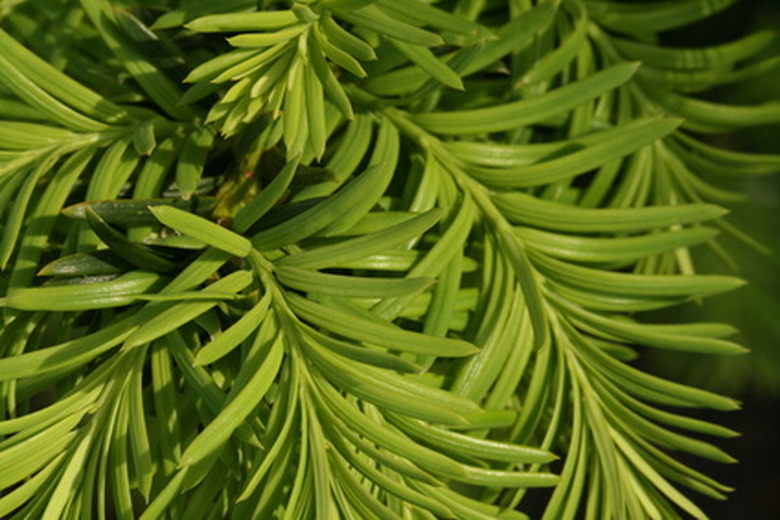How Do You Kill Evergreen Mites?
Things Needed
- Sheet of paper
- Water
- Predatory mites
- Horticultural or dormant oil
- Miticide
The mite that most commonly attacks evergreen trees is the spruce spider mite. They attack in spring and fall when the weather is cool, but you are most likely to notice the damage in the summertime. Spruce spider mites feed on the chlorophyll in the evergreen tree's needles, which develop tiny light-colored spots. Spider mites–which are not actually spiders or insects at all–must be killed with miticide.
Step 1
Hold a white piece of paper under one of the boughs of your evergreen tree, then tap the bough against it. Observe the paper. If you only find a few dust-particle-sized mites moving around, there is no need to spray the evergreen with a miticide. If the paper has more than 10 mites on it, it's time to spray.
- The mite that most commonly attacks evergreen trees is the spruce spider mite.
- If you only find a few dust-particle-sized mites moving around, there is no need to spray the evergreen with a miticide.
Step 2
Spray the tree with a stiff jet of water. Spider mites aren't very good at holding on to trees and they are often knocked off by the rain. By regularly spraying your evergreen, you may be able to cull the mite population on your tree. Continue to spray the tree weekly until the paper test reveals few or no mites.
Step 3
Release predatory mites onto your evergreen tree. Predatory mites can be purchased online with a guarantee of viability. Before purchase, contact the vendor to make sure that the mites you are purchasing are compatible with the weather conditions in your area and that the spruce spider mite is listed as one of their food sources.
- Spray the tree with a stiff jet of water.
- By regularly spraying your evergreen, you may be able to cull the mite population on your tree.
Step 4
Spray your evergreen tree with horticultural or dormant oil (3 to 4 percent) in the fall and spring when the spruce spider mites are active. These oils work by smothering the mites and their eggs on contact, so you must coat the entire tree for the spray to be effective.
Step 5
Spray your evergreen with a miticide according to the manufacturer's instructions for application rates and amounts.
Tip
Do not treat your evergreen if there are both predatory and spruce spider mites present in your tree. To check for predatory mites, examine the mites you knocked onto your sheet of paper. If some of the specks appear different and move faster than others, these are predatory mites and they may be doing a better job of controlling the mite population than any other control method. The horticultural experts at Ohio State University suggest using the miticide dicofol (Kelthane), which is one of the few effective miticides available for non-professional use.
